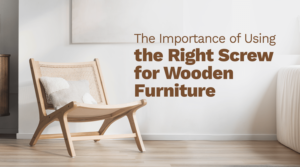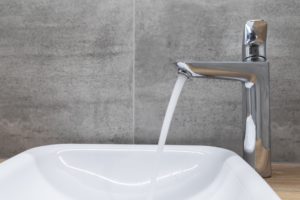There are several people with disability living throughout the world. They require a variety of different adjustments to live an easy life. To make their life a little bit easier, we must make the spaces more accessible, whether it’s home or a place for social gatherings.
We need to provide safety features as well as enhancements to try to make our home more disability-friendly. There are many ways to do so. Go through the article to learn the easy steps to make your home accessible to the disabled and help them lead their lives more peacefully.
1. Providing Ramps Instead of Steps
When you or someone in your family has mobility issues or uses a wheelchair, you might like to swap stairs for a ramp to turn your home into a more disability-friendly one. Installing stairlifts or adding a portable ramp might be a good alternative in this case. Adding extra support using non-slip surfaces or handrails can also be a good idea. If it is not possible for the time being, you may consider using any temporary measures.
2. Considering Automatic Doors
Installing automatic doors or smart gate openers might be a good addition to your house if you want to make your home more disability-friendly. Though these are usually used in commercial buildings or houses, they can be specifically more helpful for those who are disabled and use wheelchairs to move. It gives them the option to have more accessibility by eliminating their need to try opening the doors. You can also implement glass room dividers
3. Replacing Carpets with Movement-Friendly Floors
When someone in your family uses a wheelchair to move around the home or has other mobility issues, you need to consider swapping the carpeted floors with wooden flooring, which will make their movements much easier.
Carpets generally obstruct the wheels from moving freely, especially if they have a deeper pile. It can catch walkers and cause trip hazards when someone has trouble lifting their body parts, such as feet, higher off the floor or ground.
Similarly, large rugs might be an issue for them too. You need to change the flooring according to their needs as soon as possible as it greatly impacts their free movement.
4. Adjusting the Worktops’ Height
Adjusting the worktops’ height might be a big job when trying to make the home more accessible to the disabled. It can make an enormous difference to their lifestyle and the accessibility of your home. There are two alternatives to consider while reviewing the worktops’ height.
The first thing you can do is entirely adapt the height to make it wheelchair accessible for most or all of the space around your home. You can do it by making sure to lower the height overall. When this is not a suitable option, you might consider using adjustable or changeable height worktops. It will allow you to adapt the height per the particular user’s needs.
5. Widening Doorways
Space might be a big barrier to making sure your home is easily accessible. If you are trying to make your home more disability-friendly, you must also consider widening doorways. It helps accommodate the extra width of the walker or a wheelchair.
Though broadening the doorway’s width might be a costly measure or process, it is much needed for an easily accessible home for the disabled. Make sure you are aware of the restrictions or covenants of that place before undertaking any work.
6. Considering Smart Home Installations
Smart home installations can be a great solution for you. Though they are newer on the market, they might have a big impact on enhancing the accessibility of your home. Lighting, blinds, and tv controls can be managed from a panel or app. It provides more autonomy for you or the disabled.
You might need to bring fewer changes to the household and appliances overall to enjoy its advantages in the long term. These small changes can make their life a lot easier and more peaceful.
7. Reviewing Furniture Placement
Furniture may become a barrier or obstacle for those with mobility issues who use a wheelchair to move around the home. Consider your furniture replacement carefully to make the space more liveable for the disabled.
Keeping arteries clear of furniture, ensuring your home has no sharp corners or tight turns, and avoiding pokey spaces will help make the home much more friendly and accessible to the disabled.
8. Adding Grab Bars to Your Bathroom
Grab bars are an easy and fast way to turn your home into a more disability-friendly one. It does not cost you much and takes less time to install. This quick process makes places, including the bathrooms, more accessible as grab bars provide additional support.
People who require extra confidence in high-slip spaces or locations like tiled areas will find it very useful. It will help them take a shower and use the toilet more easily. It will help prevent slips and falls on slippery floors, working as a balancing aid for those who experience movement issues.
Final Words
The changes you will be considering must depend on the type of disability you are accommodating, your living space as well as your budget. Making the home more disability-friendly might include a variety of adaptations. You will need to work on many things, whether minor adjustments or more significant renovations.
A disability-friendly home will help to create a space that nurtures an enjoyable and welcoming environment. This will become a place for them to relax and live peacefully while moving freely and safely.



Be First to Comment